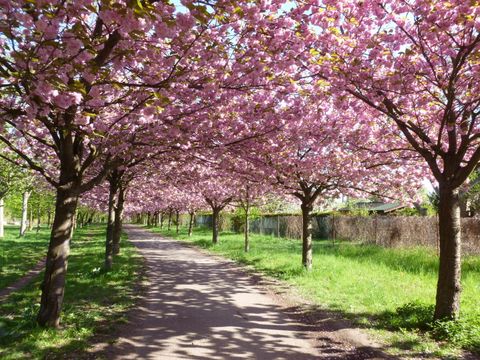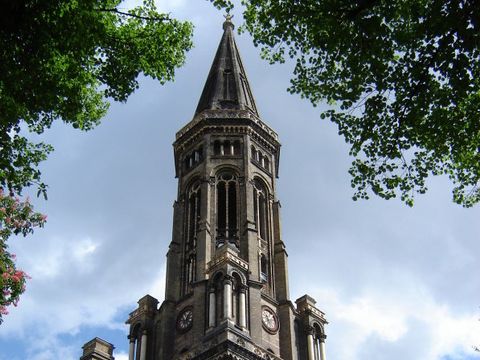At the end of the Mauerpark, the border makes a sharp turn to the west. Until the exchange of territory, West Berlin’s tallest “spectators’ gallery,” where visitors could look over the Wall and wave, stood here where Bernauer Strasse starts. The grounds of the Berlin Wall Memorial begin at this intersection. Bernauer Strasse, which the Wall Trail follows to the Nordbahnhof S-Bahn station, achieved tragic notoriety after 13 August 1961. Dramatic escapes shocked and moved the world, which watched as desperate people attempted to climb from houses on the East Berlin side of the border to reach the sidewalk below in West Berlin. The Berlin Wall Memorial documents the moving history of this divided street. On the former border strip, an outdoor exhibition covering 1.4 km uses the events on Bernauer Strasse to give a vivid and comprehensible recounting of the story of Germany’s division.









